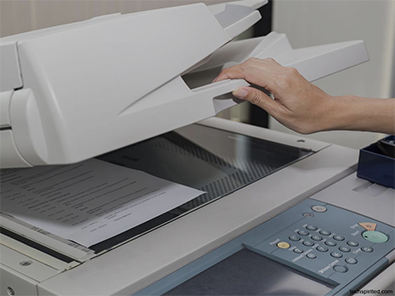Wide-format printers are becoming increasingly popular in the world of architecture and engineering. But with so many different types and brands on the market, how do you know which one is right for you and your business? This article will guide you through the process of choosing a wide-format printer, so that you can make the best decision for your needs.
What is a wide-format printer?
A wide-format printer is a type of printer that is able to print large format documents. Wide-format printers are typically used by businesses and individuals who need to print large-sized documents, such as posters, banners, and blueprints.
There are a few things to keep in mind when choosing a wide-format printer for your business or individual needs. First, you’ll need to decide what type of wide-format printer is best for you – there are both inkjet and laser wide-format printers available on the market. Second, you’ll need to consider the features and capabilities that are important to you. And finally, you’ll need to think about your budget for the printer.
How do wide-format printers differ from regular printers?
Wide-format printers are designed to print on large-sized paper, typically measuring 24 inches or wider. They use a special printing process that allows for high-quality prints with a high degree of detail and precision. Wide-format printers are often used by architects and engineers to print blueprints and other large-scale documents.
What are the benefits of using a wide-format printer for architecture and engineering?
There are many benefits of using a wide-format printer for architecture and engineering. Perhaps the most obvious benefit is that it allows you to print out large documents, such as plans and drawings, at a high quality. This can be extremely useful when you need to make sure that your work is accurate and looks professional.
Another great benefit of using a wide-format printer is that it can save you a lot of time and money. For example, if you need to make several copies of a large document, you can do so quickly and easily with a wide-format printer. This can be a huge time-saver, especially if you need to make multiple copies of the same document.
Additionally, wide-format printers are typically very versatile and can handle a variety of different media types. This means that you can use them for printing on both paper and vinyl, which can come in handy for creating signs and banners.
Overall, there are many advantages to using wide-format printers for architecture and engineering. If you need to print large documents at a high quality, or if you need a versatile printer that can handle different media types, then a wide-format printer may be the perfect solution for you.
How to choose the right wide-format printer for your need
When choosing a wide-format printer, it’s important to consider your specific needs and requirements. Here are a few things to keep in mind:
1. What type of documents do you need to print?
2. What size of documents do you need to print?
3. What printing resolution do you need?
4. What other features are important to you?
Once you’ve considered your needs, you can start narrowing down your options and compare different wide-format printers. Be sure to read online reviews and talk to other users to get their opinions and recommendations. With a little bit of research, you should be able to find the printer that is a perfect match for you!
If you are in Little Rock and you are looking for a Copier in Little Rock for your business, you may contact Clear Choice Technical Services in Little Rock. You can ask about Copier Leasing Services in Little Rock, Copier rental services in Little Rock, and Copier Repair in Little Rock.
We hope this guide has given you a better understanding of how to choose the right wide-format printer for your business. With so many options on the market, it can be difficult to know where to start. But by taking into consideration the factors we’ve outlined above, you can be sure that you’re making the best decision for your business needs.






